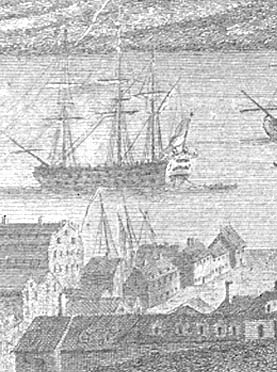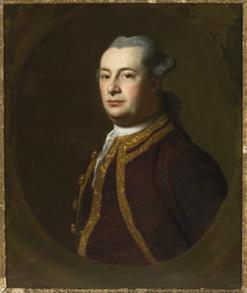
Michael Francklin or Franklin served as Nova Scotia's Lieutenant Governor from 1766–1772. He is buried in the crypt of St. Paul's Church (Halifax).
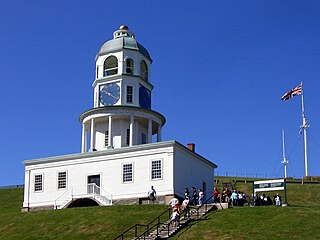
Halifax, Nova Scotia was originally inhabited by the Mi'kmaq. The first European settlers to arrive in the future Halifax region were French, in the early 1600s, establishing the colony of Acadia. The British settled Halifax in 1749, which sparked Father Le Loutre's War. To guard against Mi'kmaq, Acadian, and French attacks on the new Protestant settlements, British fortifications were erected in Halifax (1749), Bedford (1749), Dartmouth (1750), and Lawrencetown (1754). St. Margaret's Bay was first settled by French-speaking Foreign Protestants at French Village, Nova Scotia who migrated from Lunenburg, Nova Scotia during the American Revolution. All of these regions were amalgamated into the Halifax Regional Municipality (HRM) in 1996. While all of the regions of HRM developed separately over the last 250 years, their histories have also been intertwined.

Fort Edward is a National Historic Site of Canada in Windsor, Nova Scotia, and was built during Father Le Loutre's War (1749-1755). The British built the fort to help prevent the Acadian Exodus from the region. The Fort is most famous for the role it played both in the Expulsion of the Acadians (1755) and in protecting Halifax, Nova Scotia from a land assault in the American Revolution. While much of Fort Edward has been destroyed, including the officers quarters and barracks, the blockhouse that remains is the oldest extant in North America. A cairn was later added to the site.

St. Paul's Church is an evangelical Anglican church in downtown Halifax, Nova Scotia, within the Diocese of Nova Scotia and Prince Edward Island of the Anglican Church of Canada. It is located at the south end of the Grand Parade, an open square in downtown Halifax with Halifax City Hall at the northern end.

The Old Burying Ground is a historic cemetery in Halifax, Nova Scotia, Canada. It is located at the intersection of Barrington Street and Spring Garden Road in Downtown Halifax.

Jonathan Belcher was a British-American lawyer, chief justice, and Colonial Governor of Nova Scotia.
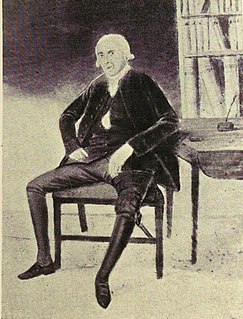
Richard Bulkeley was an influential administrator in Nova Scotia from 1749 to 1800. Historian Phyllis Blakeley writes that Bulkeley, "assisted 13 governors and lieutenant governors from Cornwallis to Wentworth. In half a century of service he took part in the founding of Halifax, the immigration of New Englanders and loyalists, and the prosperity of the French revolutionary wars." During his lifetime, known for hosting dignitaries and grand parties, he was known as "the Father of the Province." When he died, he was the last surviving settler who arrived with Cornwallis.
John Butler was a businessman and political figure in Nova Scotia. He represented Halifax County in the Nova Scotia House of Assembly from 1762 to 1772.

Charles James MacDonald was a lawyer and political figure in Nova Scotia, Canada. He represented Halifax County in the Nova Scotia House of Assembly from 1878 to 1879 as a Liberal-Conservative member. He was a member of the North British Society.
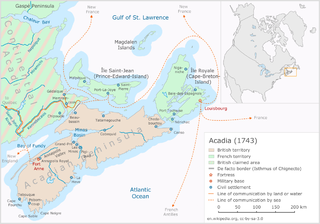
Father Le Loutre's War (1749–1755), also known as the Indian War, the Micmac War and the Anglo-Micmac War, took place between King George's War and the French and Indian War in Acadia and Nova Scotia. On one side of the conflict, the British and New England colonists were led by British Officer Charles Lawrence and New England Ranger John Gorham. On the other side, Father Jean-Louis Le Loutre led the Mi'kmaq and the Acadia militia in guerrilla warfare against settlers and British forces.

Fort Vieux Logis was a small British frontier fort built at present-day Hortonville, Nova Scotia, Canada in 1749, during Father Le Loutre's War (1749). Ranger John Gorham moved a blockhouse he erected in Annapolis Royal in 1744 to the site of Vieux Logis. The fort was in use until 1754. The British rebuilt the fort again during the French and Indian War and named it Fort Montague (1760).

Nova Scotia is a Canadian province located in Canada's Maritimes. The region was initially occupied by Mi'kmaq. During the first 150 years of European settlement, the colony was primarily made up of Catholic Acadians, Maliseet and Mi'kmaq. During the latter seventy-five years of this time period, there were six colonial wars that took place in Nova Scotia. After agreeing to several peace treaties, this long period of warfare ended with the Burial of the Hatchet Ceremony between the British and the Mi'kmaq (1761) and two years later when the British defeated the French in North America (1763). During these wars, Acadians, Mi'kmaq and Maliseet from the region fought to protect the border of Acadia from New England. They fought the war on two fronts: the southern border of Acadia, which New France defined as the Kennebec River in southern Maine. The other front was in Nova Scotia and involved preventing New Englanders from taking the capital of Acadia, Port Royal, establishing themselves at Canso.

The Burying the Hatchet Ceremony happened in Nova Scotia on June 25, 1761 and was one of many such ceremonies where the Halifax Treaties were signed. The treaties ended a protracted period of warfare which had lasted more than 75 years and encompassed six wars between the Mi'kmaq people and the British. The Burying the Hatchet Ceremonies and the treaties that they commemorated created an enduring peace and a commitment to obey the rule of law.
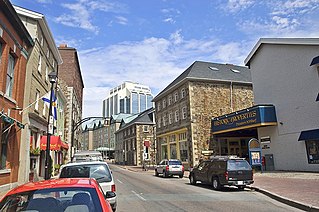
The Historic Properties are warehouses on the Halifax Boardwalk in Halifax, Nova Scotia that began to be constructed during the Napoleonic Wars by Nova Scotian businessmen such as Enos Collins, a privateer, smuggler and shipper whose vessels defied Napoleon's blockade to bring American supplies to the British commander Duke of Wellington. These properties helped make Halifax prosperous in Canada's early days by aiding trade and commerce, but they were also frequently used as vehicles for smuggling and privateering. During the War of 1812, two of the most successful Nova Scotian privateer ships during this time period were the Liverpool Packet and the Sir John Sherbrooke.

The North British Society was founded in Halifax, Nova Scotia in 1768, the oldest Scottish heritage society outside Great Britain. North British is an adjective used as an alternative to "Scottish".

Fort Ellis was a British fort or blockhouse built during the French and Indian War, located at the junction of the Shubenacadie and Stewiacke Rivers, close to Stewiacke, Nova Scotia, Canada. Charles Morris recommended a Fort on the Shubenacadie River in 1753. Governor Lawrence first considered the fort in 1754 as a means to protect Halifax from Mi'kmaq raids. Lawrence decided the fort would not be effective until after the Battle of Fort Beauséjour. The fort was completed on October 18, 1761, shortly after the Halifax Treaties were signed. The fort was to guard the new road built to connect Truro and Halifax against Mi'kmaq raids. The fort was called Fort Ellis after Governor Henry Ellis, who was appointed governor weeks after the forts completion. The fort was never garrisoned and eventually abandoned in 1767.

The Carleton is a building on Argyle Street in Halifax, Nova Scotia, built in 1760 as the home of Richard Bulkeley. Apart from two churches, Bulkeley's home is the oldest building in Halifax, Nova Scotia (1760). It was reported to have been made from the ruins of Fortress Louisbourg. Since 1786 his residence has been known as "The Carleton".

Edward Winslow was a loyalist who was a government official in Boston until he moved to Halifax, Nova Scotia in 1776 during the American Revolution. He was the great grandson of Mayflower Pilgrim Edward Winslow. During Father Rale's War, Winslows older brother Josiah was given the command of Fort St. George and was killed by natives of the Wabanaki Confederacy in the Northeast Coast Campaign (1724). He was also the father of loyalist Edward Winslow.

William Bowie (1762-1819) was a prominent merchant of Halifax, Nova Scotia who was killed in the last fatal duel on record in Nova Scotia. At age 20, William Bowie arrived in Nova Scotia in 1782 from Stirling, Scotland, the son of Alexander Bowie and Janet Murdoch. He became president of the North British Society. Under the mentorship of Alexander Brymer, Bowie founded the firm Bowie & DeBlois and in a few years amassed a fortune and Bowie became a leading citizen in Halifax.
